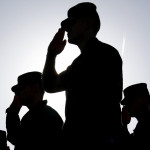As we see a nation and the world torn apart by COVID-19, the dark days from the height of the AIDS pandemic do not seem so long ago.
For those of us who have lived through and survived that horrific time, we can’t help but see the parallels to the present day. And, with great pain, we can’t help but ask ourselves, What did we really learn from it all?
Like so many reading this, the feelings of fear and concern permeate every cell of my body.
As during the AIDS crisis, it is difficult to see politicians stigmatize a disease, inciting fear and discrimination, putting countless lives at greater risk and doing nothing to reduce the health threat.
As we knew then, and know today, a virus does not discriminate against an ethnic group or region of the world, and neither should we.
It’s hard not to feel rage as we once again watch the cavalier inaction of a president and other politicians who scoffed at the very warnings that should have shaped our nation’s initial response and loss of life.
It’s unacceptable for our government to be caught off guard, as it was with AIDS, by the scope and severity of a pandemic coming to a health system unprepared to handle a mass influx of patients.
And today, we stand by, hoping that our friends and loved ones will not get sick, as we know there is not a cure on the horizon. We wait, anticipating something miraculous will happen just in time.
That anxiety and heartbreak are just as real today as they were when we watched helplessly, unable to save our loved ones dying of AIDS. That pain, those feelings, just never go away.
But through all of this, as we did then, we see hope and an army of heroes rising up to reassure us that there will be a brighter tomorrow.
Top of mind and in our hearts are the thousands of nurses, doctors and other medical professionals who each and every day put their own lives at risk, bringing love and dedication to caring for the ill, comforting the dying and seeking treatments.
As well, we see so many in our communities reaching out, helping one another, sometimes in the simplest of ways, to show they care.
During the height of the AIDS pandemic in San Francisco, it was this sense of community that helped so many of us survive.
While we all coped and managed in individual ways, it was community that came together to create the AIDS Memorial Quilt, which not only told stories of loved ones lost but would go on to spark a desperately needed social justice movement.
It was community that created the AIDS Memorial Grove in Golden Gate Park, eventually designated our National AIDS Memorial, as a space in nature for grieving and healing together.
Through the crisis, we asked ourselves then: How do we stay healthy? What can we do? How do we take action? How do we comfort and heal? How can we change?
We became storytellers as a way to get through the darkest days and forge ahead.
Just as we did through the AIDS crisis, we must come together as communities to comfort one another, to learn, to heal and to ensure that our actions today will improve the fabric of our society, for this is our legacy.
We cannot repeat the mistakes of the past. We must learn and act now, as the health and safety of millions of people are at stake.
Yes, there will be dark days. But from that grief and pain, there will always be hope.







Comments
Comments